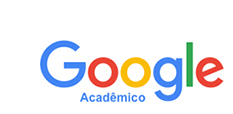RELAÇÃO DO ÂNGULO Q COM A DOR FEMOROPATELAR E VARIAÇÃO DA ATIVIDADE ELÉTRICA DO MÚSCULO VASTO MEDIAL OBLÍQUO: ANÁLISE POR ELETROMIOGRAFIA THE Q ANGLE AND ITS RELATION TO FEMOROPATELLAR PAIN AND VARIATION OF THE ELECTRIC ACTIVITY OF THE VASTUS MEDIAL OBLIQ
DOI:
https://doi.org/10.13037/rbcs.vol6n16.373Keywords:
dor femoropatelar, eletromiografia de superfície, vasto medial oblíquo, ângulo Q.Abstract
A síndrome femoropatelar (SFP) é umas das queixas mais comuns entre os consultórios e clínicas de fisioterapia. É definida como dor difusa na região anterior do joelho, geralmente de início insidioso e progressão lenta, agravada, sobretudo, por atividades que aumentam as forças de compressão na articulação femoropatelar. Este estudo teve como principal objetivo verificar se a dor femoropatelar tem relação com o ângulo Q, o índice de massa corpórea e a atividade elétrica do músculo vasto medial oblíquo. Foram participantes deste estudo 20 indivíduos do sexo feminino, com idade entre 15 e 30 (23 ± 2,85) anos, com ou sem queixa de dor na região do joelho. Pôde-se perceber, após este estudo, que, utilizando-se da eletromiografia de superfície entre as voluntárias avaliadas, quanto ao ângulo Q em relação à dor femoropatelar, não há correlação considerável (r = -0,211). Já quanto à atividade elétrica do músculo vasto medial oblíquo em relação à dor femoropatelar, há uma pequena correlação, considerada moderada no MID (r = 0,063) e fraca no MIE (r = 0,316). Por fim, comparando-se o índice de massa corpórea com a mesma dor femoropatelar, foi constatado não haver nenhum tipo de correlação (r = -0,366). Conclui-se que, nesta pesquisa, o nível de relação com a dor existente no grupo estudado nada tem a ver com alterações do ângulo Q, ativação do músculo vasto medial oblíquo e seu índice de massa corpórea.Downloads
Downloads
Issue
Section
ARTIGOS ORIGINAIS
License
Policy Proposal for Journals offering Free Delayed Access
Authors who publish in this magazine agree to the following terms:
- Authors maintain the copyright and grant the journal the right to the first publication, with the work simultaneously licensed under a Creative Commons Attribution License after publication, allowing the sharing of the work with recognition of the authorship of the work and initial publication in this journal.
- Authors are authorized to assume additional contracts separately, for non-exclusive distribution of the version of the work published in this magazine (eg, publishing in institutional repository or as a book chapter), with the acknowledgment of the authorship and initial publication in this journal.
- Authors are allowed and encouraged to publish and distribute their work online (eg in institutional repositories or on their personal page) at any point before or during the editorial process, as this can generate productive changes, as well as increase impact and citation of the published work (See The Effect of Open Access).









